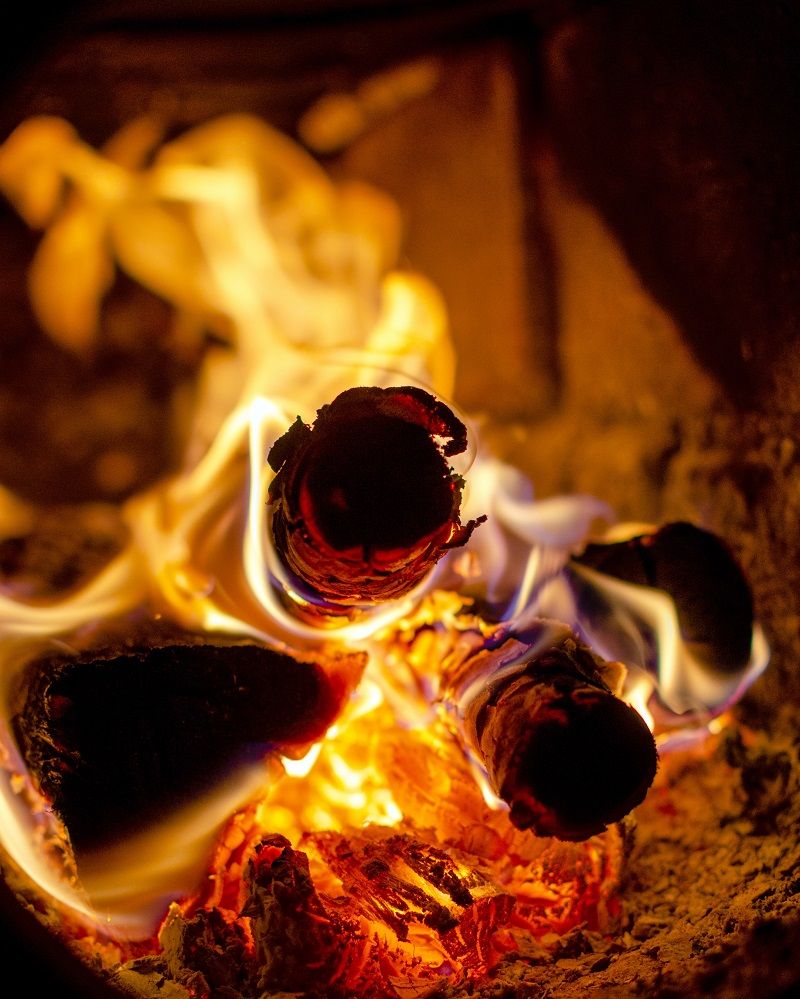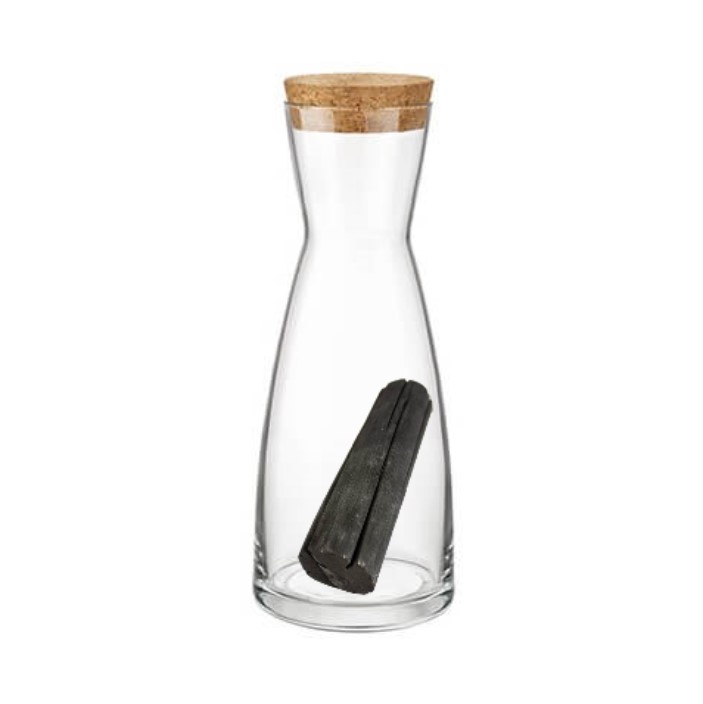How is binchotan made?
It is quite simple, activated charcoal or binchotan is made initially by burning wood from very dense hardwood trees, date pits, olives, coconut shells, ... In fact, it can be made from any wood producing plant source.
This combustion or carbonisation occurs at very high temperatures (calcination or pyrolysis to be precise) where a first porosity is created by combustion and elimination of elements other than carbon.

Then a removal of the tars from the pores is carried out to increase the adsorbency of the coal. There are two main principles involved in this:
physical activation
chemical activation
The physical activation of binchotan consists of a second combustion in a stream of air and water vapour. This activation will create millions of microscopic cells which will significantly increase its adsorption surface.
The chemical activation of binchotan is carried out with phosphoric acid giving a larger pore charcoal allowing it to create symbioses with bacteria, this is detailed in the blog here [1].
This is not a very polluting process as the activating agent is usually rinsed off and recycled.
Where are activated charcoals used?
Activated charcoals, since the first world war and the industrial evolution of the 20th century, are the first adsorbent materials used on an industrial scale [2].
They are also the materials used in many water treatment processes [2].
Activated charcoal can be used in our daily lives to purify water
How much CO2 is emitted in the production of a binchotan?
To give you an idea of the level of carbon emissions into the atmosphere by the manufacture of 65g of binchotan (i.e. one stick), a small life cycle analysis of the whole process has been carried out.
We took into account the first step of carbonisation of 100g of wood to give the binchotan and the second step to increase the adsorption surface.
The raw materials were also taken into account, i.e. hardwood and cardboard for packaging.
The transport was also taken into account. They leave from Indonesia, where binchotan is made, arrive in Belgium and then transit to the Woody company.
Finally, a final trip is made to your favourite shop KissPlanet.
We assumed that the binchotan was used every day for one year.
This adds up to 2.5 kg of CO2 equivalent emitted into the atmosphere. This may sound like a lot, but you have to compare it to a commercial filter or a well-known brand like Brita, Philips or Berkey.

Loulou the Kangaroo
I am here to inform you about everyday issues

